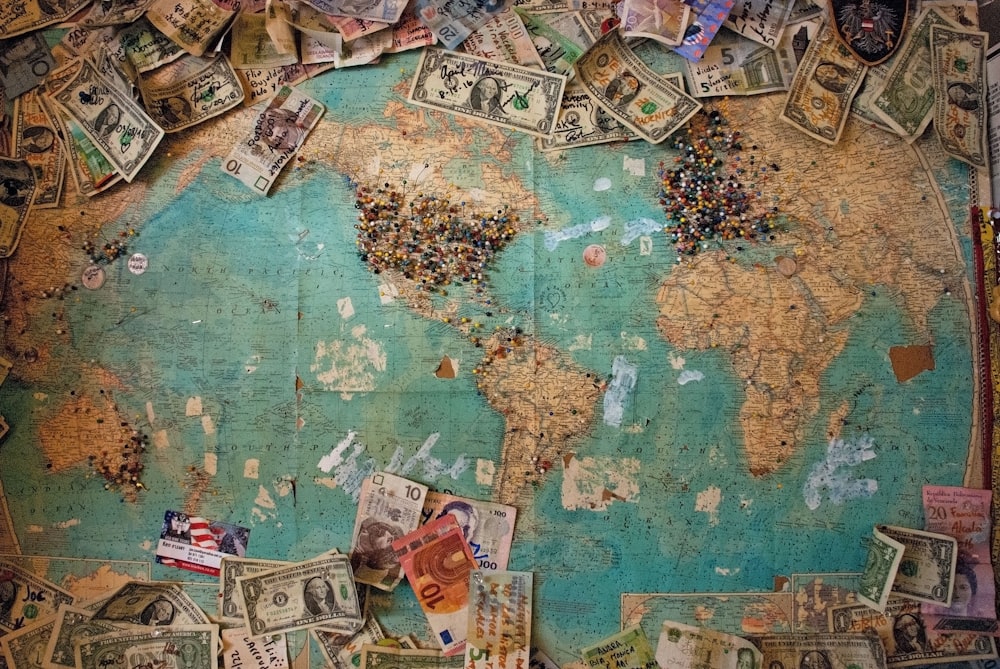Charting A Global Economy Gripped By Inflation, Tariffs, And A Shutdown
Image Source: Unsplash
A complex and often contradictory picture of the global economy is emerging, as a fresh wave of inflation in Europe clashes with a US labor market that is being forced into a data blackout.
From a surprise stabilization in China’s troubled property market to a political crisis in France, a series of powerful and competing forces are shaping a deeply uncertain world. Here are the key developments that defined a volatile week.
An inflationary autumn descends on Europe
The ghost of inflation, long thought to be vanquished, has returned to haunt the continent.
A quickening of consumer prices was seen across Europe’s largest economies in September, a development that will reinforce the European Central Bank’s decision to keep interest rates on hold.
In Germany, inflation rose to 2.4%, its fastest pace since February, a trend mirrored by rising price pressures in France, Italy, and Spain.
In a stark contrast, Swiss inflation remained unexpectedly low, a challenging development for a central bank already grappling with the outsized impact of US tariffs.
A market flying blind in a shutdown storm
In the United States, a political crisis has created an economic one. A government shutdown, triggered by a bitter funding impasse in Washington, has halted the release of the official September employment figures.
This has forced investors and the Federal Reserve alike to rely on a patchwork of private-sector data to gauge the health of the American labor market.
Those indicators all point to the same conclusion: a sluggish market with limited hiring and firing, a picture that is likely to strengthen the case for a Fed rate cut.
The shutdown is not the only source of American uncertainty. President Donald Trump has ordered a new wave of tariffs on timber and furniture, a move that will hit Canada particularly hard and further disrupt global trade.
A glimmer of hope, a torrent of rain in Asia
Across Asia, a more nuanced and divergent story is unfolding. In a potential sign of a long-awaited stabilization, China’s residential home sales held steady in September, a rare glimmer of hope for a sector that has been in a deep and prolonged crisis.
In India, a powerful force of nature has delivered a dose of economic relief.
The country has witnessed its strongest monsoon in five years, a deluge that has lifted the prospects for key crops and raised hopes that stubbornly high food prices may finally begin to ease.
The golden fortress, a world of contrasts
As these economic and political dramas play out, a silent but powerful vote of no-confidence is being cast in the world’s oldest safe haven.
The price of gold has continued its relentless climb, a rally so powerful that the value of the US Treasury’s massive gold reserves has now surpassed an almost unimaginable $1 trillion.
This flight to safety is a potent symbol of the deep and persistent anxieties that are shaping a world in flux.
From central bank decisions in Africa to a looming fiscal crisis in Mexico, the global economy is a tapestry of competing risks and rare opportunities, a complex picture where the only certainty is more uncertainty to come.
More By This Author:
Applied Materials Decline After $710m Revenue Hit From US Export RestrictionsEvening digest: Trump sets deadline for Hamas, Canada’s slowdown, BTC rebounds
Why Tesla’s Record Q3 Is A One-Time High, And What Comes Next?
Disclosure: Invezz is a place where people can find reliable, unbiased information about finance, trading, and investing – but we do not offer financial advice and users should always ...
more



